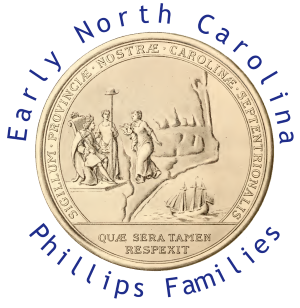Royal Colonial Boundary of 1665
From ENC Phillips Group Wiki
The Royal Colonial Boundary of 1665 is a historic civil engineering landmark, as designated by the American Society of Civil Engineers. It was a brainchild of King Charles II of England to mark the boundaries of various English North American colonies. It was intended to stretch from the Atlantic Ocean to the Pacific Ocean, but in reality it was only surveyed from the Atlantic to the Mississippi River. It would later to be said of the project:
"The boundary Charles II envisioned was one of the most grandiose in history. To decree an imaginary geographic straight line, 3,000 miles long, as a boundary across an unknown continent that he didn't even own was the height of royal pomposity."[1]
The survey was done along the 36° 30' North latitude. It was to mark the boundary between the colonies of Virginia and North Carolina. It was done in five stages, using cadastral and geodetic surveying, being one of the first attempts to mark a boundary so long that it had to be concerned with the arc of the planet Earth. The boundary line would eventually mark the border between Kentucky and Tennessee, as the surveying was not completed in 1819, well after the United States gained its independence from the British Empire.[1]
An aberration in the line occurs on the Virginia/Tennessee border, due to the surveyor Peter Jefferson, father of Thomas Jefferson, continually moving north of the designated latitude. There are three theories on the reason for this:[2]
- The surveyor was drunk.
- Iron deposits in the mountains interfered with compass readings.
- People who lived in Tennessee exerted influence over the location of the line.
The extension of the line occurred in 1779 and 1780, to where the line would first cross the Cumberland River. From there Virginia hired Thomas Walker to survey the line to the Mississippi River. Walker did this, but did not do a perfect job due to dense virgin forest, mountainous terrain, and rough riverbeds. In 1821 the state of Tennessee did a survey of the line, to determine the true border between Kentucky and Tennessee, but was not resolved due to Kentucky not participating. A joint survey by the two states, commanded by Austin P. Cox and Benjamin Pebbles ran from 9 January to 20 October 1859. They started a 320-mile survey from the New Madrid Bend of the Mississippi River to the Cumberland Gap. Every five miles a 3-foot high stone slab was placed to mark the boundary.[3]
The line would later be reused to mark the boundary, north of which slavery could not be practiced, established in the Missouri Compromise of 1820.
A marker at the Cumberland Gap National Historical Park denotes where the boundaries of Kentucky, Tennessee, and Virginia intersect. Under the Royal Proclamation of 1763 it also marks how far west an English colonist was allowed to reside.[4] Its exact location is N 36'36.045, W 83'40.518.[5]
References
- ↑ 1.0 1.1 "Royal Colonial Boundary of 1665". American Society of Civil Engineers. http://live.asce.org/hh/index.mxml?lid=143. Retrieved 2008-03-22.
- ↑ A Brief History of Washington County, Virginia, Washington County, Virginia website (accessed 22 March 2008)
- ↑ Kleber, John E. The Kentucky Encyclopedia. (University Press of Kentucky). pg.102-103.
- ↑ "Cumberland Gap". Tennesse History for Kids, Inc.. http://www.tnhistoryforkids.org/places/cumberland_gap. Retrieved 2008-03-22.
- ↑ "International GPS waypoint registry (Kentucky)". FAR laboratories. http://www.waypoint.org/gps4-kn.htm.
